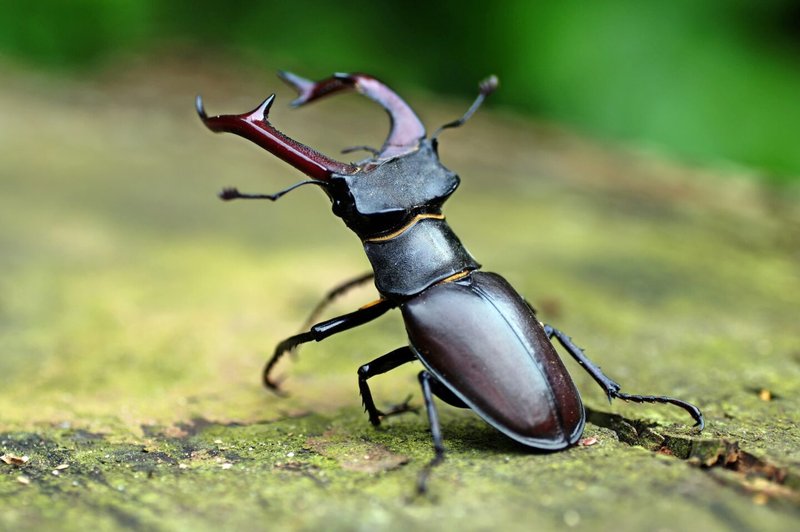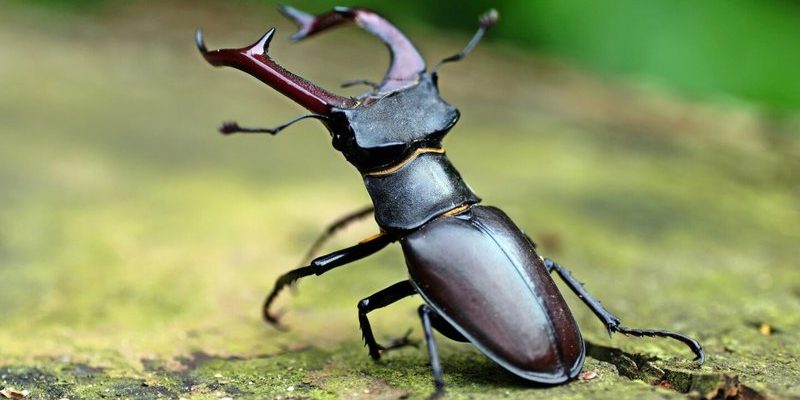
Stag beetles are more than just graceful creatures of the night. They act like nature’s little recyclers, helping to maintain the balance in their habitats. Just like a bridge connects two sides of a river, stag beetles connect various components of the ecosystem, linking plants, decay, and even other animals. You might be wondering how they fit into this puzzle. The truth is, their actions and interactions create ripples throughout their environments, making them important players in maintaining ecological health.
What Are Stag Beetles?
Stag beetles belong to the family Lucanidae, and there are over 1,200 species worldwide. They’re best recognized for their large mandibles, which can look remarkably like antlers—hence the name “stag.” These beetles vary in size and color, with some being only a few centimeters long, while others can grow up to 15 centimeters or more.
Their life cycle follows a pretty straightforward path: egg, larva, pupa, and adult. This transformation is a lot like watching a movie with exciting plot twists, each stage bringing new challenges and adventures. The larvae live underground, primarily feeding on decaying wood, which helps break down dead materials. It’s like a hidden treasure hunt beneath the soil, where these little guys are working hard while we sit oblivious above ground.
The Importance of Stag Beetles in Ecosystems
Stag beetles play several crucial roles in their ecosystems. Primarily, they’re decomposers, breaking down rotting wood and contributing to nutrient cycling. Think about it: without these little recyclers, forests would be cluttered with dead materials. Their efforts help recycle nutrients back into the soil, promoting the growth of plants and the overall health of the forest.
Additionally, stag beetles serve as food sources for various predators. Birds, frogs, and even some mammals rely on these beetles for sustenance. You could say stag beetles are part of a culinary adventure, feeding the creatures that help maintain the balance of their ecosystems. Without them, the food web would be a little less intricate, and many animals might struggle to find a meal.
Habitat and Distribution of Stag Beetles
These beetles are found in many parts of the world, with a strong presence in temperate forests. They prefer habitats that include decayed wood, which provides food for their larvae. Stag beetles are often spotted in parks, gardens, and woodlands where old trees are plentiful.
Different species have unique habitat preferences. Some may thrive in urban areas where old trees are preserved, while others are adapted to more natural settings. Their adaptability makes them resilient, yet many populations face threats due to habitat destruction and climate change. Maintaining their environments is critical for their survival, and by extension, the ecosystem’s stability.
Stag Beetles and Biodiversity
Biodiversity is the spice of life for ecosystems, and stag beetles certainly contribute to that mix. By feeding on decaying wood, they help create a habitat for fungi and bacteria, which are vital for nutrient cycling. When stag beetles break down these materials, they make it easier for other organisms to thrive.
This process supports various plant life that depends on the rich nutrients provided by decomposed materials. In turn, diverse plant life supports other animals, leading to a robust and balanced ecosystem. So, by merely existing, stag beetles help maintain biodiversity that keeps nature vibrant and thriving.
Threats to Stag Beetle Populations
Unfortunately, stag beetles face several threats. One significant issue is habitat loss due to urbanization and deforestation. As their natural habitats disappear, so do their food sources. Climate change also plays a role, altering the environments they need to survive. This shift can disrupt their life cycles and reduce their populations.
Additionally, the use of pesticides can harm stag beetles directly or indirectly by reducing their food sources. Here’s the thing: if we want to keep these beetles in our ecosystem, we must be mindful of how we treat our environment. Protecting their habitats is essential for preserving their populations and the roles they play.
Conservation Efforts for Stag Beetles
Many organizations and individuals are working to conserve stag beetles and their habitats. Simple actions, like planting native trees and creating beetle-friendly gardens, can help. These efforts provide habitats for stag beetles to thrive and reproduce.
Community awareness is also crucial. Educating others about the significance of these insects can foster appreciation and encourage conservation efforts. When more people understand the importance of stag beetles, support for preserving their environments can grow, leading to a healthier ecosystem.
Final Thoughts on Stag Beetles
Stag beetles might not be the first creatures that come to mind when you think about ecosystems, but they play a crucial role. From helping decompose dead wood to serving as food for other animals, these beetles contribute to the balance of nature in meaningful ways. By understanding their importance, we can take steps to protect them and their habitats.
As we enjoy our coffee and think about the world around us, let’s remember these fascinating insects working diligently beneath the surface. Supporting stag beetles means supporting a rich, diverse ecosystem that benefits us all. With a little effort and awareness, we can ensure they continue to thrive for generations to come.

